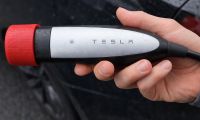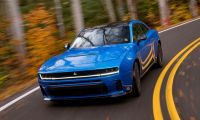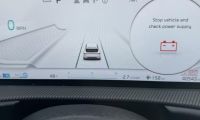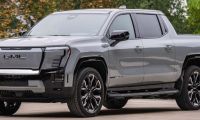EVs Did Have Great Years
After a couple of great years for Electric Vehicles (EVs), it seems the bottom has fallen out of the market. Indeed, if you look at the general media and their instant snap judgments, you would be hard-pressed to find that EVs were selling.
Related story: Kia sales have slowed but looking more closely, they are up
Indeed, the “major media” follows a story that news outlets like the Washington Post, the New York Times, the Chicago papers, and the LA Times are laying out. For whatever reason, these outlets seem to have a significant vested interest in seeing EVs fail. This isn’t a feeling of paranoia on the part of the automotive press. The general media keeps pushing the lines that EV sales are dead, and those that aren’t dead are rapidly dying on the vine.
Is it the truth? No, it certainly isn’t. Recently, several distinguished automotive journalists have done deep dives into the pieces put out by the general media. And the results have been surprising.
Instead of going up in smoke, sales of EVs have slowed – no doubting it --- but at the same time EV sales have dipped but they are still there. Writers like John Volker, Torque News’ John Goreham, and publisher Armen Hareyen have looked closely at the EV marker and have concluded that EV sales may have slowed. Still, as a percentage of new vehicle sales, they hold their own, albeit at a lower level.
Sales Aren’t Where they were, but they aren’t bad
Granted, sales aren’t at 2022 levels when EVs were ramping up and it seemed that the future was a given for EV growth as sales kept ramping up month over month, year-after-year At that time, Tesla was making noises about a cheaper model sedan and the automaker also cut prices to keep their sales up. Ford answered with a series of price cuts as well. To help move its stock. A bit later on, the automaker cut back on its ambitious targets. At one time, the Blue Oval was forecasting its production goals would be up to 600,000 vehicles per year and climbing by 2026.
Related story: For the second year, Consumer Reports honors Maverick
For has radically scaled those figures back and is now putting its EV production at a more reasonable number of about 130,000 per year. Other automakers are falling in line with that thinking as well.
Indeed, it is likely that automakers such as Mercedes-Benz and others will stick with their more traditional vehicles, according to information that has surfaced in the last couple of days.
Other automakers such as Hyundai and Kia (corporate partners) are staying with their target figures as their models hold their own at far lower levels.
There’s nothing wrong with adjusting sales forecasting levels even as the industry moves forward. It is true that the radically large sales projections that some automakers were making had to be radically scaled back.
Political Leaders Have To Change
Even President Biden, who has been pushing EVs to help save the environment, has had to admit that his thinking has had to change.
But the funny thing here is that if you look at the active parts of the EV market, sales are still moving ahead, albeit more slowly, and are heading toward more than 2 million EVs this year. Indeed, a couple of months ago, the EV market hit the 1 million vehicle level, and while the numbers have fallen back, they are still heading for 2 million this year, a far more manageable level. And who is to say they won’t go higher when the weather clears up and EVs can run in the ranges they were meant ot use – roughly 30-degrees F to about 80 degrees F. No one knew that there would be a prolonged deep freeze in the Midwest that left hundreds of various EVs little more than bricks that had to be brought into charging areas.
Carmakers have to remember user experience when selling EVs
Traditional Automakers Struggle With EVs because they have forgotten the User experience
Further, no one reminded newer EV owners that in the cold weather, these vehicles had to be prepped to take charge – albeit slowly – but they still did charge.
As you would expect there was a massive reaction to the problem of hundreds of EVs that needed to be towed in to charging areas. And there were the usual stories about EV owners who wished their EVs could be ICE (internal combustion-driven vehicles). Some owners also promised that this was it; they were heading back to ICE vehicles because of their experience.
More Than Anecdotal Stories
Unfortunately, these are more than anecdotal stories, as many EV owners were dissatisfied with their experience. So, it is likely that there will be lots of “special EV sales” coming up. But who knows how much as the weather and temperature modify and EVs operate where they are happiest?
Once people find out how to prepare their cars for colder weather charging next winter and realize that perhaps they should be parked in garages out of the weather, there may be a small renaissance in EVs again.
More importantly, as researchers have found out in the last few weeks, perhaps the change to full EVs like the Ford Mustang Mach-E and the Ford F-150 Lightning EV is still a few years away as the market tries to rebound from the sales debacle of the very cold Midwest winter.
Researchers have found that the market is ready for EV, but a special type, hybrids that are driven by ICE engines and which handle the cold far batter. That has been the experience of Torque News staffers who have looked at vehicles like Ford’s Maverick Hyrid which can be driven by either its ICE engine or its electric Indeed, sales of the Maverick have been constrained buyers have been out there looking for them. Other hybrids are reporting similar results.
Perhaps Hybrids Should Lead for a While
There are suggestions now – not all that bad either – that perhaps as the market gets ready for EVs, hybrids are the plateau that we should be sitting on now as battery tech and education change the outlook for the future.
Is the Ford Edge A Key to automotive survival?
Who would have thought that EVs and the change to EVs would hang on hybrids now;. However if you look closely at the market this is where we are now. It will take massive education and tech changes that are upcoming – solid-state batteries – for instance, to make EVs palatable again for many. Until then, hybrids serve the purpose and move us to an electric future.
Ford Motor Photo
Marc Stern has been an automotive writer since 1971. His automotive articles have appeared in venues including Popular Mechanics, Mechanix Illustrated, AutoWeek, SuperStock, Trailer Life, Old Cars Weekly, Special Interest Autos, and others. You can follow Marc on Twitter or Facebook.












